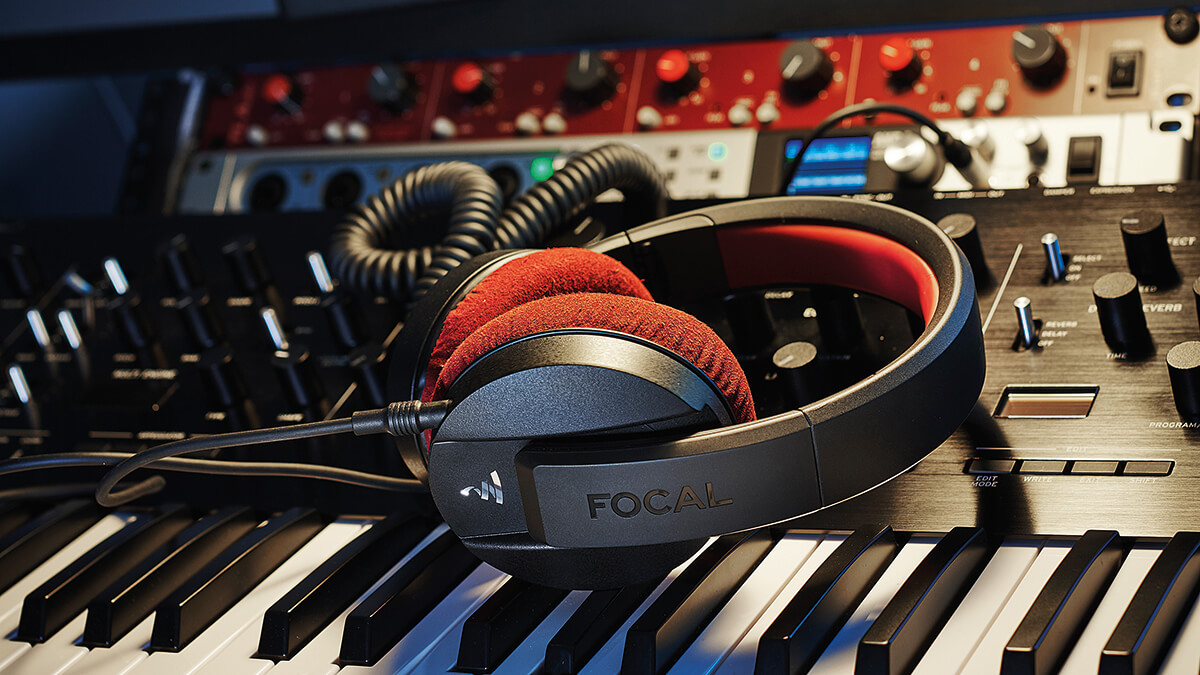How to choose studio headphones for recording, mixing and mastering
Image Credit: MusicRadar
Headphones for music production differ from commercial headphones such as Beats by Dre. For example, Beats headphones boost the bass and low-end frequencies in your music. In contrast, studio headphones should have a frequency response that is as flat as possible. Therefore studio headphones present sound as plainly as possible.
Another difference is that we often wear music production headphones for long periods of time. Due to the nature of making music, we sit with our headphones on a lot. And sitting in our studios for hours on end is all the easier when our headphones are comfortable to wear!
- Studio headphones for mixing, mastering or monitoring?
- On-ear or over-ear headphones?
- Does headphone impedance matter?
- Headphone sensitivity
- What is a frequency response in headphones?
- Noise isolation
- Comfort and durability
Furthermore, durability is a huge factor to consider. Many studio headphones are pretty expensive. While many consumer headphones are also expensive, the cost of music production gear is generally expensive anyway. As a result, music producers and independent artists only want to spend money on headphones once every few years at the very least.
But there are more technical specifications to consider, much like the frequency response we mentioned. After all, there is more than one type of headphone for music production – and some serve specific purposes.
Sound engineers use headphones as a form of a magnifying glass to identify the smallest details of a soundtrack. Studio Monitors allow you to work accurately with tones, equalization as well as dynamics. This is due to the fact that the sound in the headphones does not depend on the space or room, which do not always have perfect acoustics.
SoundsightR
This article mentions “speaker drivers” or just “drivers” a lot. For a detailed guide as to how speaker/headphone drivers work, see the article below.
Studio headphones for mixing, mastering or monitoring?
Manufacturers build studio headphones to serve three purposes.
Professional producers and recording artists use monitoring headphones when recording – but what are monitoring headphones? As the name suggests, we use monitoring headphones to monitor our performance while recording. Musicians and vocalists performing in studios use them to monitor their performance because they isolate sound within the headphones from outside noise.
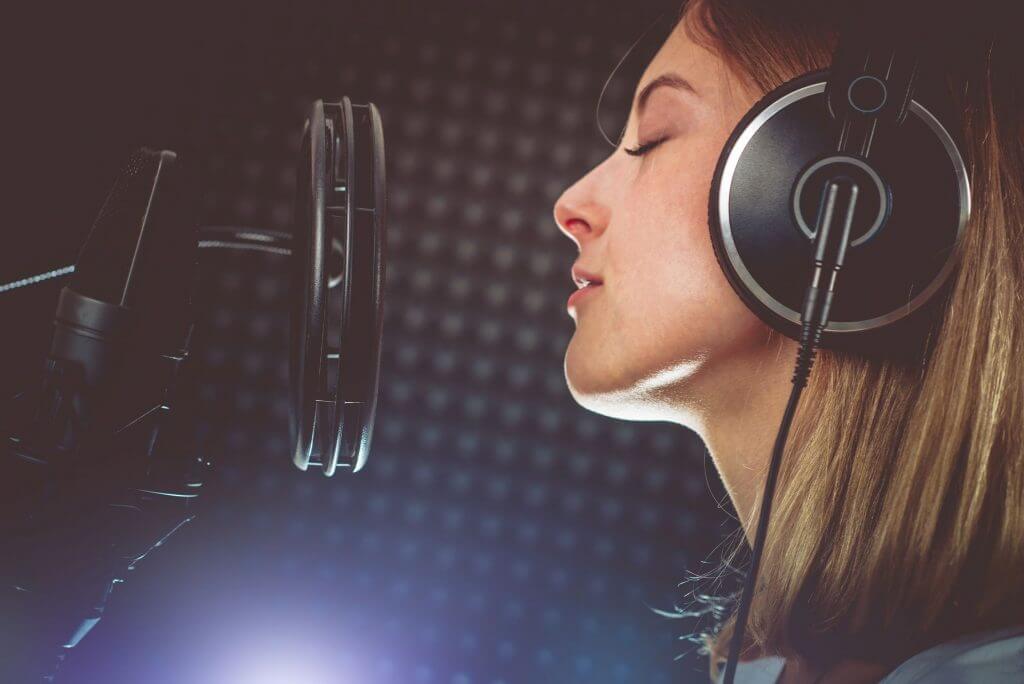
In other words, monitoring headphones inform the producer and performing artists exactly how everything is sounding in real-time. As a result, they can make informed decisions about what the song in question needs.
Mixing headphones do serve the same purpose – to inform the producer how the audio is sounding – although they go about it differently. Before we explore the technical specifics in the next segment, all you need to know at this point is that headphones for mixing allow the producer to make informed mixing decisions. However, note that engineers do most of their mixing via studio monitors. In effect, headphones are only a reference point.
Finally, mastering headphones also reproduce the original signal accurately. Many producers use the same headphones for mixing and mastering for reasons we’re about to explore.
Closed-back headphones for monitoring
The earcup is completely closed on closed-back headphones and this is why we call them so. To be more specific, sound doesn’t leak from them or leak in, making them great at noise isolation. But because there is nowhere for the sound pressure to release inside the earcup, it reflects inside the earcup! This causes problems when you want to hear every detail accurately. It can also cause discomfort!
Closed-back headphones are not the best choice if you want to hear an accurate reproduction of your music while mixing, and they can also become uncomfortable to wear after a while.
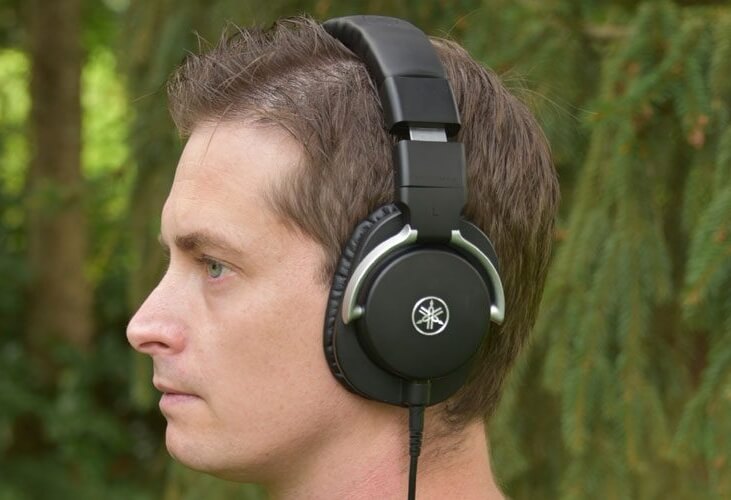
But their closed nature does make them an excellent choice for monitor headphones! Vocalists, drummers, and every other performer in a studio will wear them while playing because they don’t let sound leak out of them and cause feedback in the microphone recording. No noise cancellation technology is necessary for closed-back headphones because they physically block outside sounds much more than open-back headphones too.
Open-back headphones for mixing and mastering
We use open-back headphones for mixing and mastering. In contrast to closed-back headphones, the outside of the earcup is open. To be more specific, a thin metal grill with plenty of air holes allow sound pressure to leave the earcup.
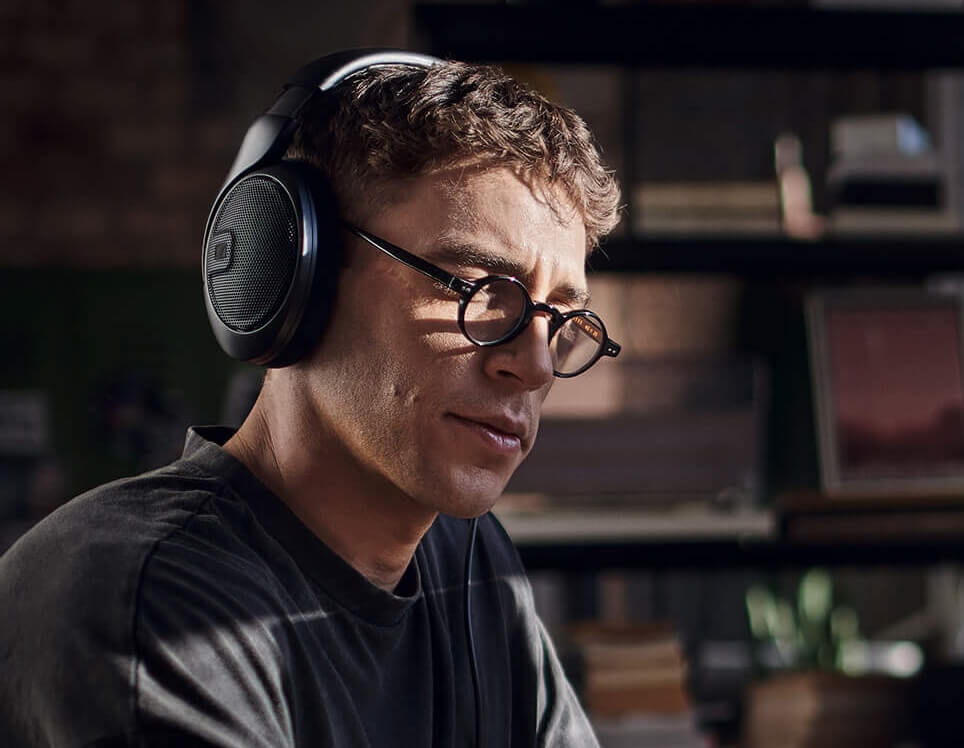
As a result, air passes through the earcups of open-back headphones from the rear of the speaker driver. As the air can pass through uncontested, no sound reflections occur within either ear cuff. Ultimately, because open-back headphones release sound pressure from the driver, they have a more “natural” sound. This directly affects the stereo-field and bass response too. Open-back headphones are the perfect choice for both mixing and mastering as a result. The design allows the wearer to hear an accurate or near-accurate reproduction of a mix – with no sound reflections in the earcup – and therefore make better mixing decisions.
In contrast to closed-back headphones, open-back headphones do leak sound a lot more easily and let outside noise in too. Due to their open nature, open-back headphones are best suited to quiet environments – which a professional studio should be. And this is why we wouldn’t want to use them for monitoring!
What are semi-open back headphones?
Semi-open back headphones are partially open from the back, but more or less closed. But unlike closed-back headphones, they don’t completely seal the rear of the speaker driver. This allows air to pass in and out through the earcup.
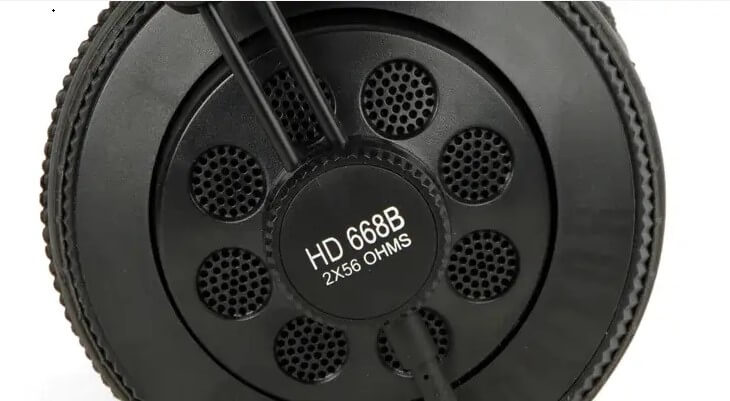
These headphones are the best of both open-back and closed-back headphones. They’re more suited to mixing than monitoring because they do leak sound and let outside noise in. However, they do so to a much less extent than open-back headphones so you can use them for effective monitoring if necessary.
When you’re looking for your first pair of studio headphones with a small budget, semi-open back headphones are great value for your money. Buying a pair of semi-open back cans is buying a merger of two different types of headphones. As a result, you can use them for both mixing and monitoring as they offer extended low-frequency response, a good stereo field, effective noise cancelling and sound isolation.
On-ear or over-ear headphones?
Another important factor to consider is whether you want your headphones to sit over your ears or on them.
Circumaural headphones
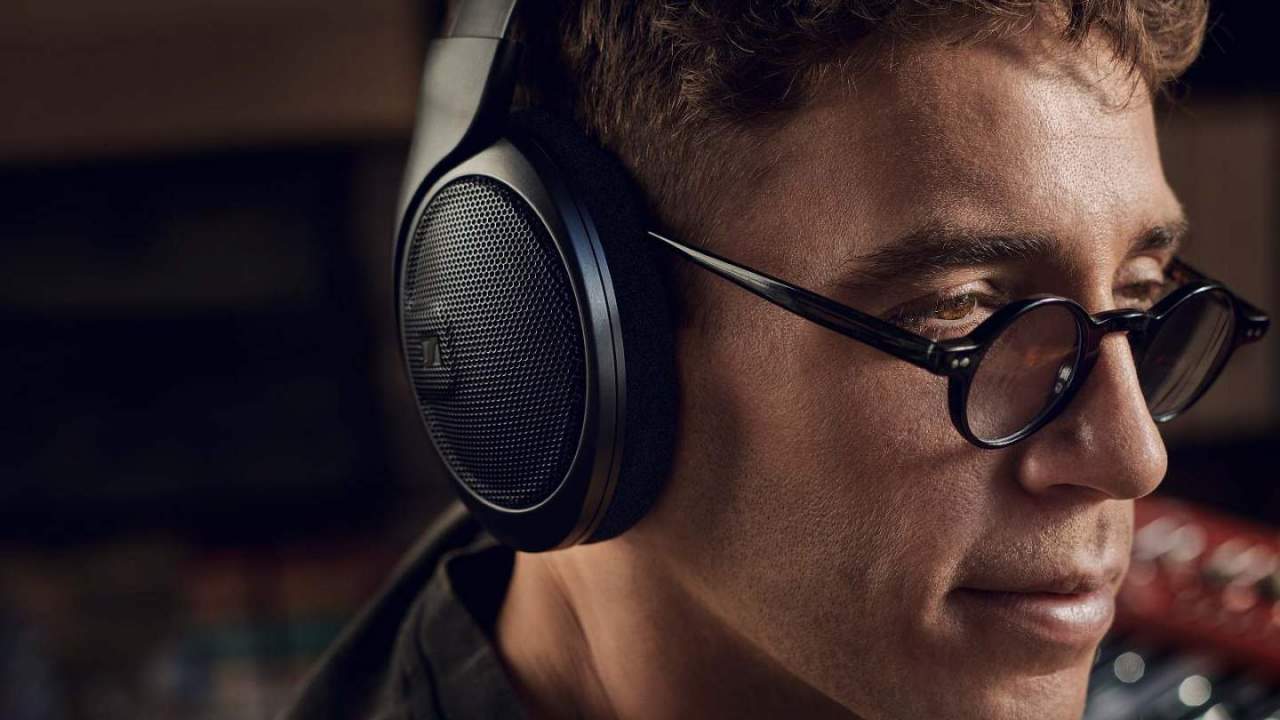
The earcups on circumaural headphones – otherwise known as over-ear headphones – surround your ears. As a result, circumaural headphones have bigger drivers and are therefore bulkier headphones. And of course, the bigger driver size delivers more volume – making them the favourite choice of music production headphones compared to supra-aural headphones.
Supra-aural headphones
In contrast, the earcups of supra-aural headphones sit on your ears. Otherwise known as on-ear headphones, supra-aural headphones are more compact than circumaural headphones and are more portable. But due to the smaller driver size, they aren’t very good for studio headphones. Additionally, there isn’t very much noise isolation at all.
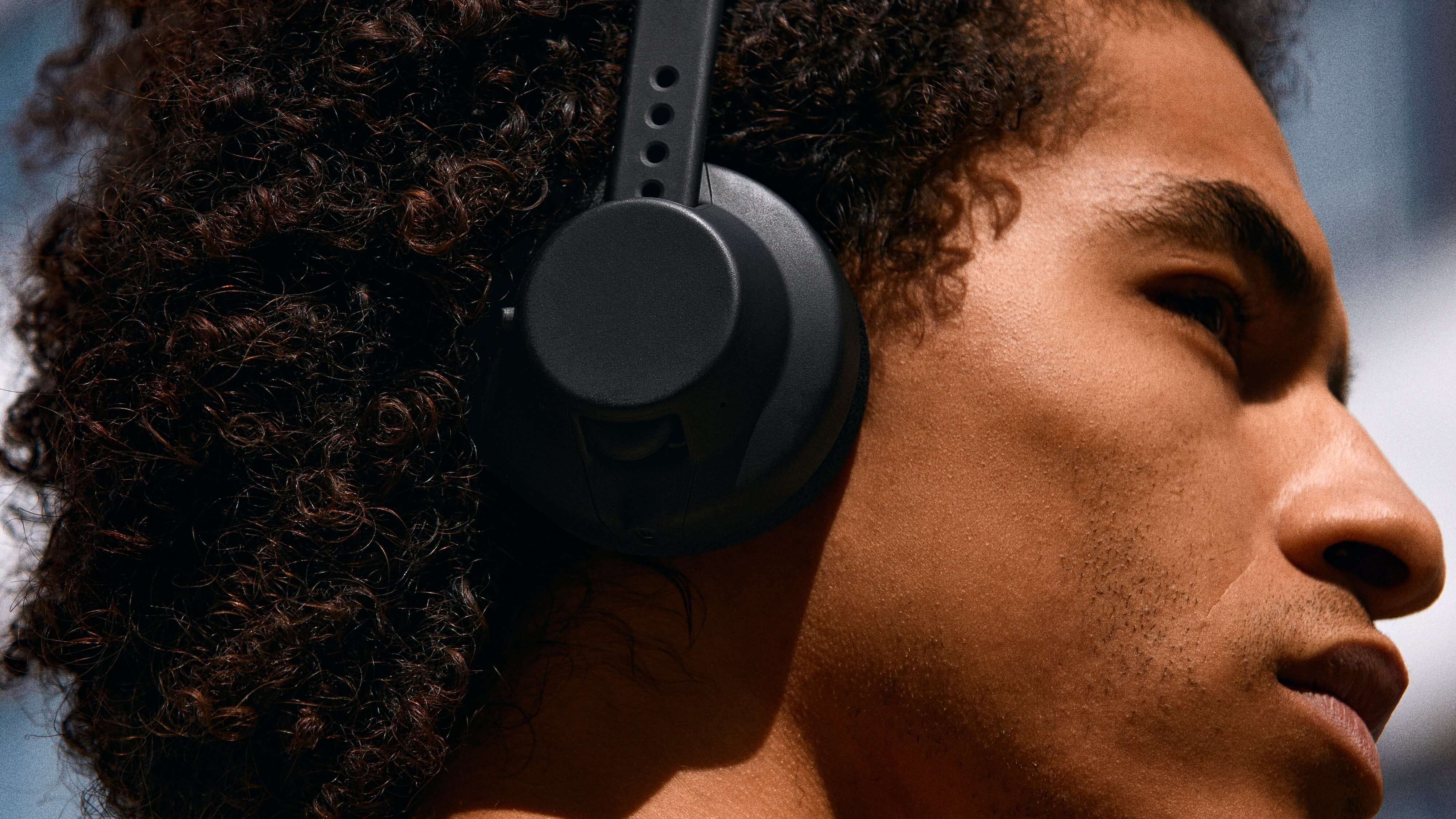
Now that you are in the know about the different headphone types and the purposes they serve, it’s time to talk about some more specific things. These include frequency response, noise isolation, sensitivity, comfort and durability. Oh, and we’ll talk about a little thing called impedance too.
Does headphone impedance matter?
In short, impedance is an amount of electrical resistance; expressed in ohms (Ω). When a headphone specification lists a specific impedance, such as 50ohms, this means they need a certain output capacity from your sound source like your audio interface. As a result, the headphone amplifier in your interface must meet that output capacity so your headphones can reproduce your signal with ample volume.
Impedance is a means of controlling the flow of alternating current (AC) in a circuit board via capacitors. If capacitors didn’t regulate the flow of alternating current then our electronics would fry. It’s a “measure of the opposition that a circuit presents to a current when a voltage is applied“. In headphones, this resistance informs us as to how much we’ll need to turn the volume knob up before their volume is adequate to listen to. If your headphones have a high number in front of the Ω symbol, it means you have some power-hungry headphones that will perform far better with a juiced-up amplifier than without one. As a result, devices like smartphones and tablets won’t be able to provide the necessary power to provide enough volume in these headphones. As you may have now figured, headphone impedance really does matter when you’re choosing studio headphones!
To make things more complicated, the rate of impedance changes depending on what frequencies are present in the input signal too.
Headphone impedance and what to look for
Headphone resistance level determines the voltage your amplifier needs to output to generate one milliwatt (1/1000 of a watt) of output power. The higher your headphone impedance, the more output power your amplifier needs to generate so your headphones can reach optimal volume.
Any impedance up to 32Ω can be played quite happily off a simple portable device, like a smartphone. Impedance from 33-100Ω is a little bit of a grey area – you’ll probably be able to generate enough volume, but you could certainly improve things by adding in a portable headphone amp, which will both increase the power and sharpen the sound. Anything above 100Ω is almost certainly going to require an amplifier. These days, there are plenty of headphones that run from 100-300Ω, and even some that nudge the 600Ω mark.
The Master Switch
Beyerdynamic headphones have notoriously high impedance levels – some reaching 600ohms! As a result, headphones with high impedance rates are much harder to damage via overloading and you can use them with a wider range of gear too. And because high impedance headphones can handle electrical signals better, they can reproduce sound more accurately.
When looking for studio headphones, we recommend taking a look at impedance before anything else. The impedance rate will give you some insight into the headphone’s character in addition to what power your amp needs to output. A good rule of thumb is to look for studio headphones with an impedance value of at least 60 ohms or more. If you have a bigger budget, we recommend going big on impedance if your audio interface headphone amplifier can produce enough power.
Headphone sensitivity
Headphone sensitivity is related to impedance, but it refers to how well your headphones will convert electrical signals into sound with the input power your amplifier gives them. We measure headphone sensitivity in decibels of Sound Pressure Level per milliwatt, or dB SPL/mW. In other words, we can use headphone sensitivity to measure how loud a pair of headphones will play at a particular power level. If one pair of headphones has a higher dB SPL/mW rating than another with one milliwatt of power, the first pair will produce louder audio.
If your headphones have 90dB of sensitivity, this means that 90dB is the highest volume your headphones can produce with just one milliwatt of power. So a higher sensitivity value means a louder total output volume.
What is a frequency response in headphones?
Headphone frequency response refers to how well your headphones reproduce your input signal across the frequency spectrum. And if your headphones don’t apply any frequency cuts or boost to your input signal, they have a “flat frequency response” which is what we want!
However, no headphones – at least none that I’m aware of – have a fully flat frequency response. Therefore frequency response indicates how reliable your headphones are at reproducing your signal with no alterations at a particular frequency or within a frequency range.
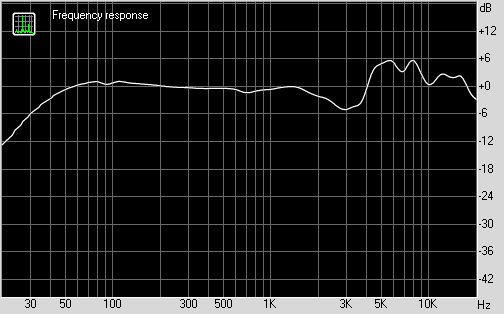
The graph above represents the frequency response of the Sennheiser HD 400 Pro headphones. Between 100 Hz and approx 1.5 kHz, the frequency response is pretty flat. This indicates that the headphones will produce mid-bass frequencies as the producer intended them to be heard, in addition to all frequencies all the way up to somewhere in the high mids.
However, the graph also indicates that the headphones cannot generate enough power to push enough air beneath the mid-bass (under 100 Hz). This means the headphones can’t reproduce frequencies between 20 Hz & 100 Hz with as much power as they need and compromise some accuracy. And as you go further left across the graph from 100 Hz to 20 Hz, you can see the dB gradually dips to -12 dB. Further to the right of the graph, things get a little trickier above 1 kHz.
A gradual dip of about 6dB between 1.5 kHz & 5 kHz tells us the drivers can’t move fast enough to produce high-mids accurately. Following this dip, we see a 12 dB boost which takes the frequency response to +6 dB in the treble ranges.
20 Hz – 20 kHz: the frequencies that we hear
Soundwaves in treble frequencies oscillate much faster than bass frequencies do. Therefore tweeters must oscillate far faster than woofers. And to accurately produce the full threshold of human hearing with no cuts or boosts in the spectrum, multiple drivers, cones and domes are necessary – and headphones can’t fit all that in.
The threshold of human hearing ranges from 20Hz to 20kHz (20,000 Hz). So in an ideal world, our headphones would be able to reproduce an input signal in this frequency range without adding any cuts or boosts to any frequencies within this range. But some headphones offer a wider frequency response than 20 Hz – 20 kHz too. For example, some have a frequency response of 5 Hz to 33 kHz. But be wary when investigating these headphones because a wider frequency response doesn’t always mean a better sound quality.
But headphones with a wider frequency response do have a greater ability to reproduce more bass and treble frequencies of your input signal. And when it comes to cuts and boosts to particular frequencies, headphone specifications may feature a plus/minus deviation which looks like “±6 dB” as one example. This particular example tells us that the headphones will apply 6 dB of frequency cut/boost at particular frequencies.
Sub & low bass frequencies (20 Hz to 80 Hz) and treble frequencies (5kHz – 20 kHz) are harder for headphones to reproduce – high frequencies require the driver to move faster and low frequencies require the driver to push more air – so it’s in these ranges that these cuts/boosts are going to be most often.
Noise isolation
Headphones always rely on a tight seal between the earpad and your skin when pumping bass. As a result, earpads need to sit snuggly around your ears. If you’re looking for studio headphones online, it’ll be very hard to find a specific listing as to how well the headphone isolate sound. That’s why it’s important to consider the material of the earpads. Faux leather is one of the most popular materials because it provides excellent noise isolation, as does real leather.
But you’ll find headphones with earpads made from a range of different materials. While some materials are better for sound isolation and bass response, other materials are more comfortable and therefore feel better on your skin. And over time, materials like synthetic leather can lose their structural integrity. As a result, they become less suited to neither sound isolation nor comfort.
The best earpad material for noise isolation is leather – either synthetic (faux) or real.
Comfort and durability
As we discussed at the beginning of the article, it’s important that you don’t forget to consider both comfort and durability. Imagine spending out on headphones only to discover you can’t wear them for more than 5 minutes! However, comfort also relates to the sound pressure the drivers generate inside the earcups – not just how comfortable they are to wear on our heads.
While mixing and mastering, you’ll be spending hours with your headphones on. If the acoustics of your room aren’t that great, headphones will allow you to hear details that studio monitors may not. It’s often thought that open-back headphones are the most comfortable headphones to wear. And as we discussed earlier, open-back headphones let sound pressure leak outside. This characteristic makes open-back headphones easier to wear for long periods of time.
Closed-back headphones are more suited to shorter sessions. As the sound pressure builds up inside the earcup, it’s possible that this build-up could damage your eardrum. But if you give your ears regular breaks away from the headphones you can manage this problem.
Finally, the durability of your headphones refers to how much rough and tumble they can take. Like a lot of studio gear, studio headphones are expensive. And nobody wants to spend money on expensive gear that doesn’t last! An easy resolve is to look into tried, tested, and trusted headphone brands with a lot of positive reviews.
So, what studio headphones are you going to choose?
Related: What are the different types of microphones? How do they work?
